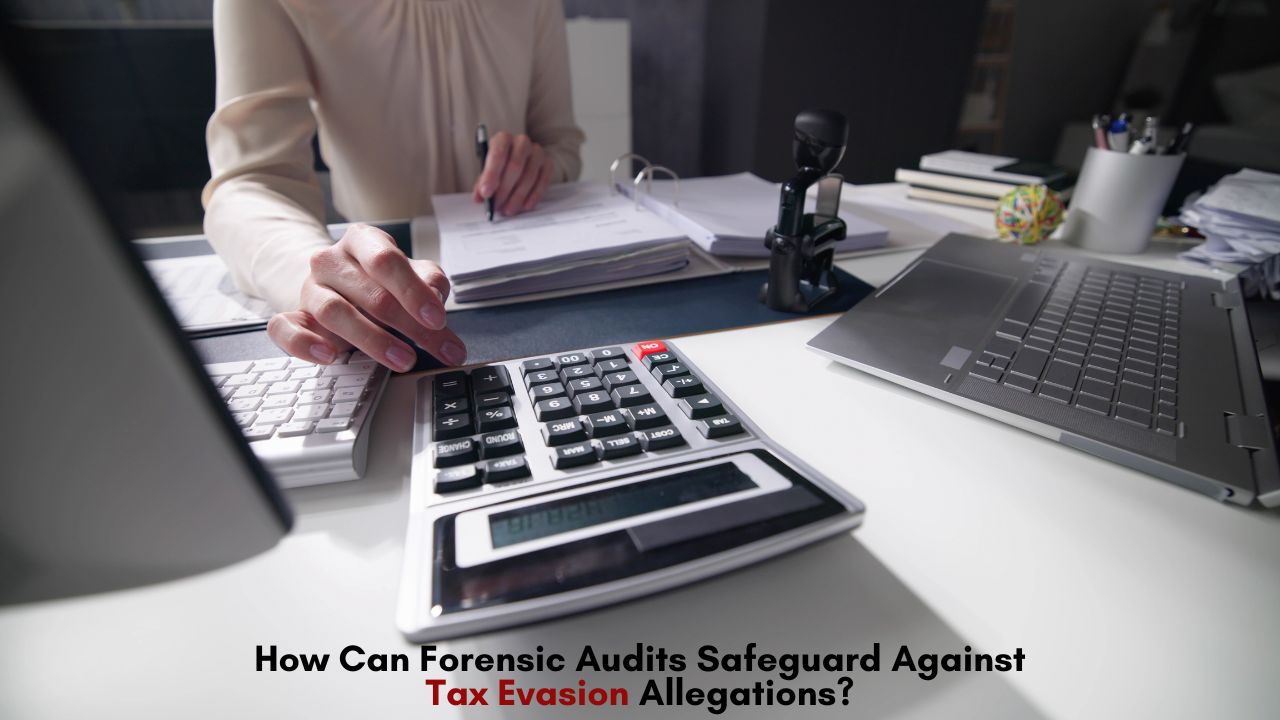
Introduction
Tax evasion allegations can tarnish a company’s reputation, drain financial resources, and lead to severe legal consequences. Businesses, especially in industries like manufacturing, are under constant scrutiny from tax authorities. Forensic audits have emerged as a powerful tool to identify, prevent, and address financial irregularities. These audits go beyond conventional accounting practices to detect fraud and ensure compliance with tax laws.
Understanding Forensic Audits
A forensic audit is a detailed examination of a company’s financial records to uncover fraudulent activities, misappropriation of funds, or non-compliance with regulations. Unlike standard audits, forensic audits focus on identifying potential legal issues and providing evidence that can stand in court if needed. They play a pivotal role in detecting tax evasion schemes, such as falsified invoices or unreported income.
Benefits of Forensic Audit
The benefits of forensic audits extend beyond addressing tax evasion. They create a robust financial framework, instilling trust among stakeholders and regulatory bodies. Key advantages include:
- Enhanced Transparency: Forensic audits provide an in-depth analysis of financial records, ensuring all transactions are legitimate.
- Fraud Detection: Early detection of fraudulent activities helps mitigate risks and prevents financial losses.
- Regulatory Compliance: Businesses can ensure adherence to tax laws, reducing the likelihood of penalties.
- Litigation Support: The findings from a forensic audit can serve as credible evidence in legal disputes.
Internal Audit Procedure for Manufacturing Companies
To safeguard against tax-related issues, a robust internal audit procedure for a manufacturing company is crucial. This involves:
- Planning: Defining the scope and objectives of the audit, including compliance with tax regulations.
- Execution: Reviewing financial transactions, payroll processes, and expense allocations.
- Analysis: Identifying discrepancies and areas of potential risk.
- Reporting: Documenting findings and recommending corrective actions.
Integrating forensic audits into this framework enhances the overall efficiency of the internal audit procedure, providing an additional layer of scrutiny and assurance.
Role of Forensic Audits in Manufacturing
The manufacturing sector often deals with complex financial operations, including supply chain costs, labor expenses, and raw material procurement. A specialized audit, such as a manufacturing audit, ensures all processes align with legal and financial regulations. Forensic audits complement manufacturing audits by addressing vulnerabilities in financial practices, particularly those that could lead to tax evasion allegations.
The Importance of Technical Audits
In industries that rely heavily on machinery and technology, technical audits play a pivotal role. A technical audit evaluates the efficiency, safety, and compliance of equipment and operational processes. When paired with forensic audits, these evaluations can uncover financial discrepancies such as inflated maintenance costs or unauthorized procurement. This synergy ensures both operational and financial compliance, safeguarding the business from allegations of malpractice.
For example, a technical audit might reveal that a factory’s machinery was serviced multiple times in a short period. A forensic audit can then investigate the financial aspects of these services to determine if they were legitimate or involved inflated costs meant to evade taxes.
Factory Technical Audits and Tax Compliance
A factory technical audit focuses on the operational aspects of manufacturing units, ensuring adherence to industry standards. By examining production records, maintenance logs, and supply chain documentation, these audits help identify discrepancies that could raise red flags during tax inspections. Forensic audits complement factory technical audits by analyzing financial implications, providing a comprehensive view of compliance.
Consider a scenario where a factory is accused of underreporting production output to minimize taxes. A forensic audit could analyze the financial records related to raw material usage and finished goods inventory to verify the accuracy of the reported figures. Simultaneously, a factory technical audit could validate the operational capacity, ensuring consistency between production records and tax filings.
Case Studies Highlighting Forensic Audits
Several companies have successfully navigated tax evasion allegations by leveraging forensic audits. For example, a manufacturing firm facing accusations of unreported income used forensic audit findings to demonstrate that discrepancies were due to clerical errors rather than intentional fraud. The detailed evidence the audit provided resolved the issue and restored the company’s credibility.
Steps to Implement Forensic Audits
Implementing a forensic audit requires a methodical approach:
- Engage Experts: Hire experienced forensic auditors with a strong understanding of tax laws and industry-specific regulations.
- Analyze Data: Examine financial statements, invoices, and contracts for inconsistencies.
- Identify Red Flags: Look for signs of tax evasion, such as unusual transaction patterns or discrepancies in reported income.
- Document Findings: Maintain detailed records of all findings for use in legal or regulatory proceedings.
Conclusion
Forensic audits are a critical tool in safeguarding businesses from tax evasion allegations. These audits protect companies from legal and financial repercussions by addressing financial discrepancies, ensuring compliance, and providing litigation support. Integrating forensic audits with technical and factory audits for manufacturing businesses creates a comprehensive strategy to manage risks and maintain credibility. Proactively adopting these measures can save companies from the costly consequences of tax evasion allegations, fostering trust and sustainability in their operations.






Leave a Reply